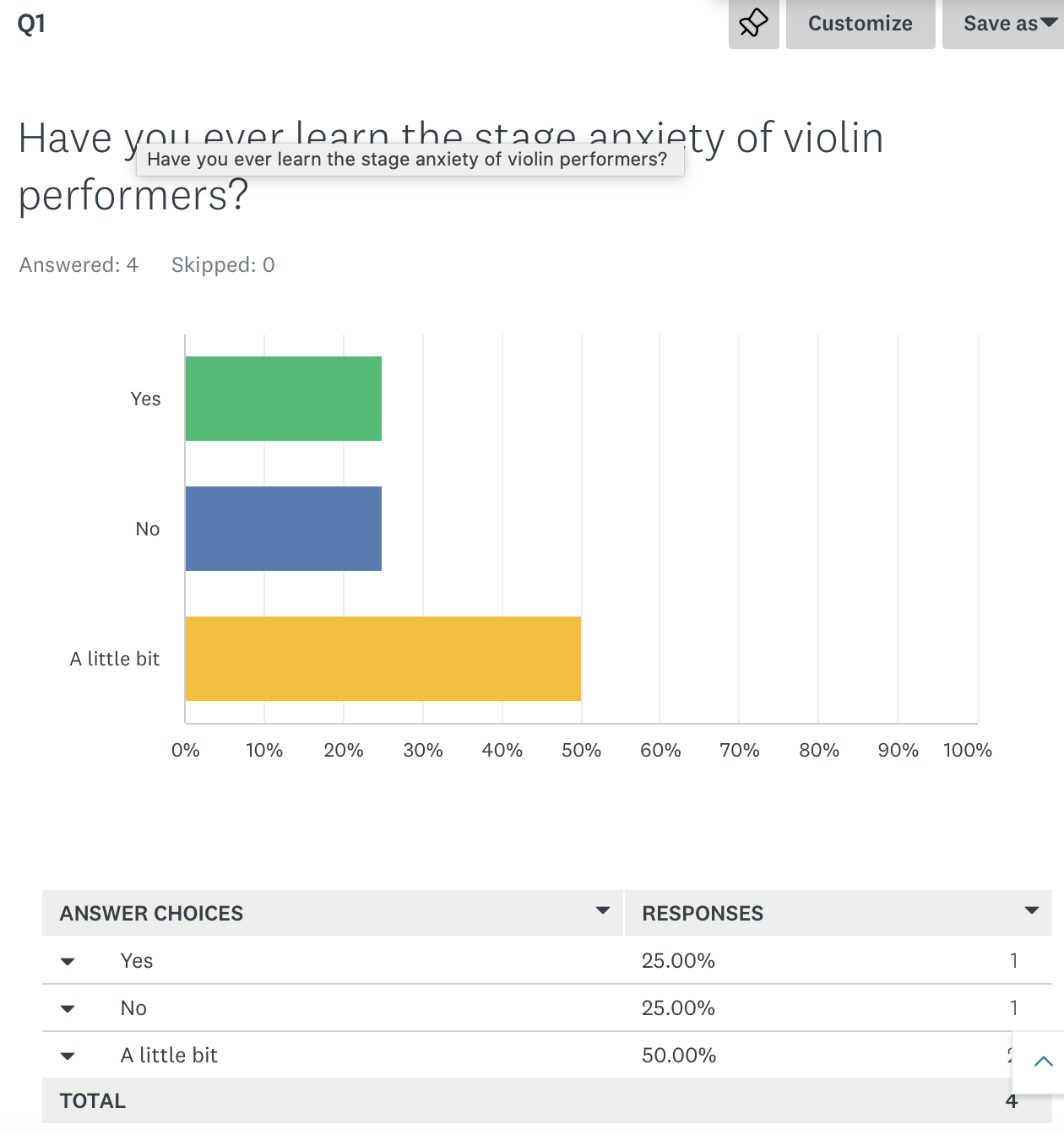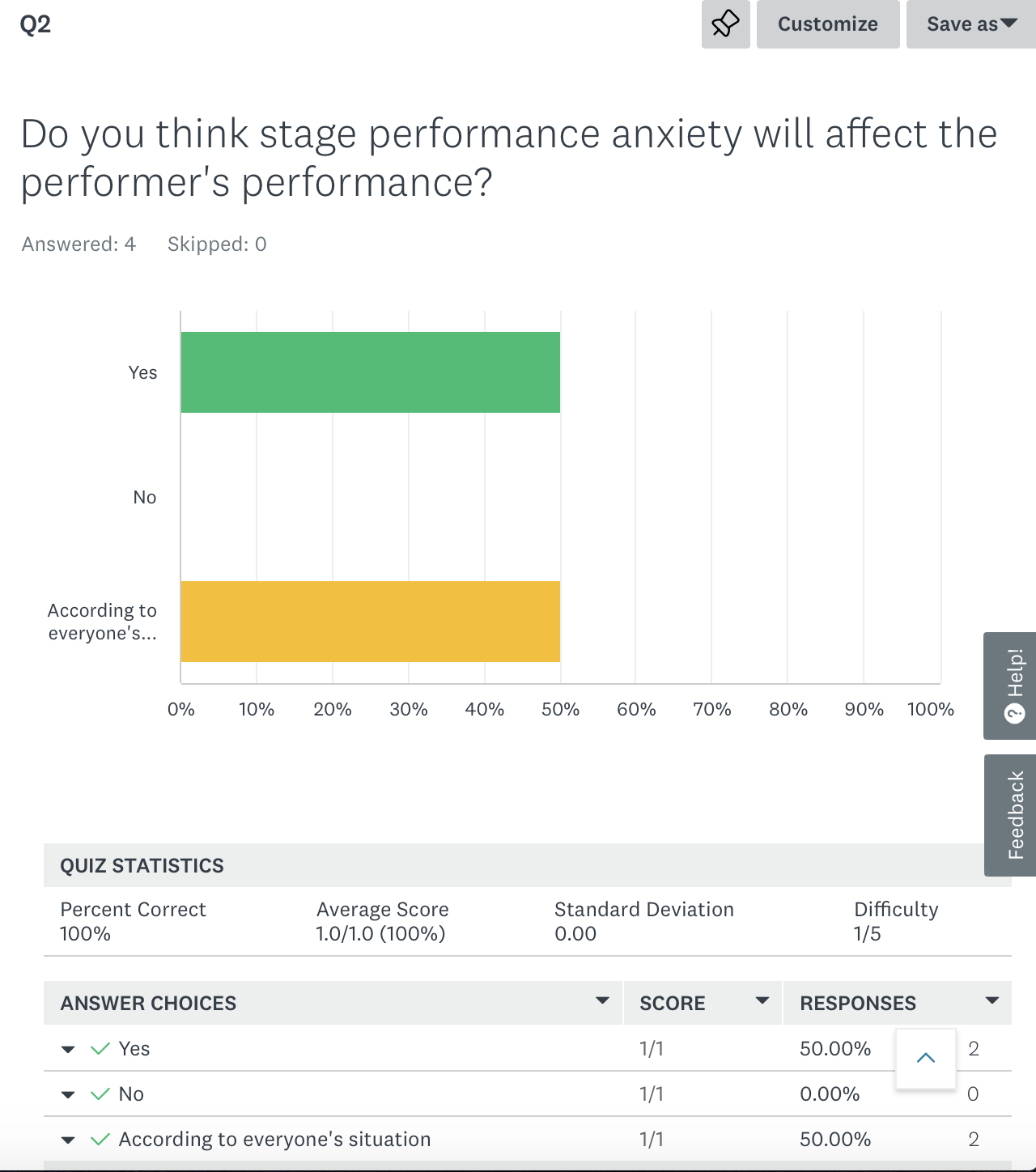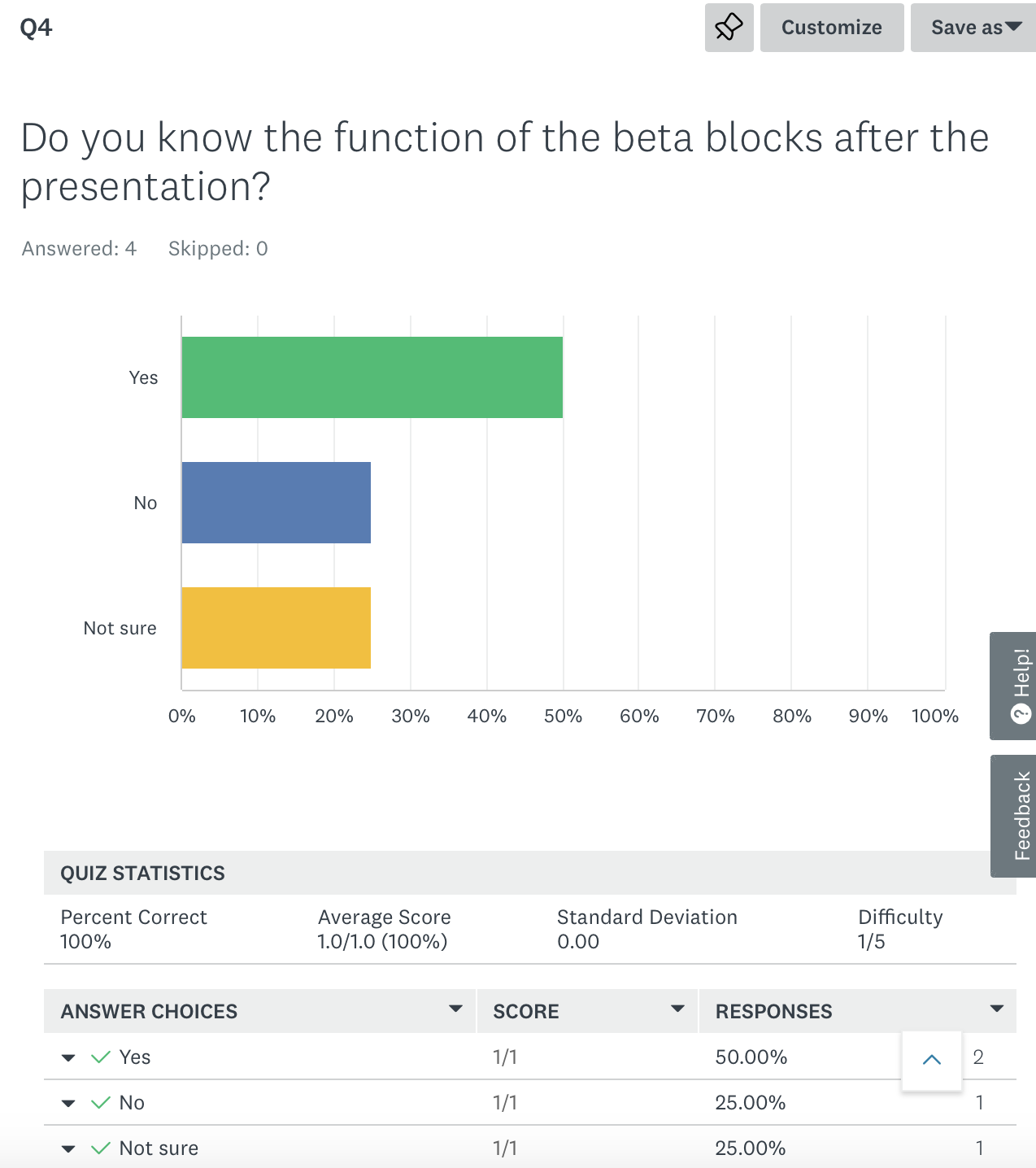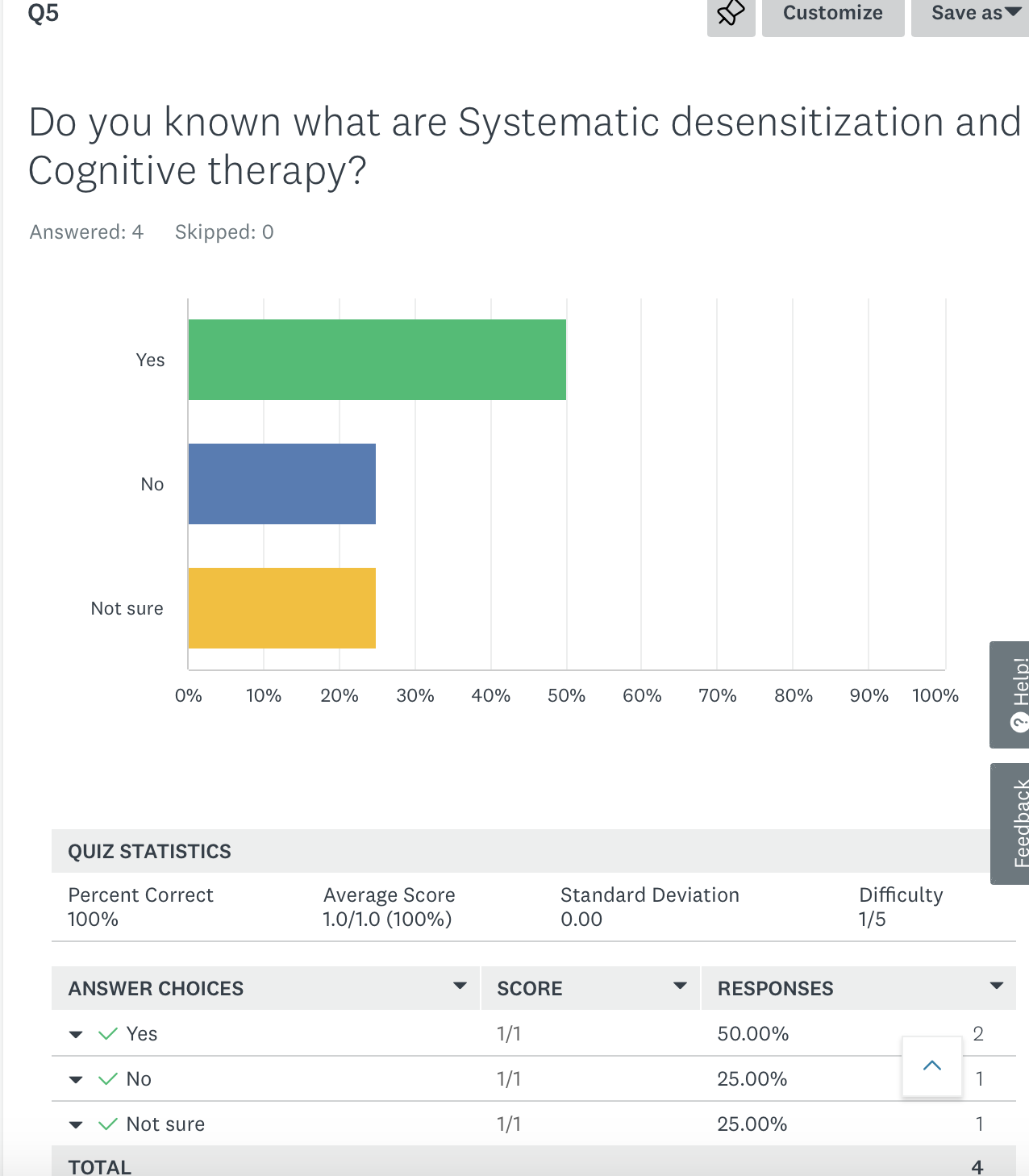The workshop presentation majored in the discussion of the Music Performance Anxiety (MPA), the effect of the condition on violinists, and the therapeutic and medical means of alleviating the conditions. As discussed, Music Performance Anxiety is the condition of persistent and marked nervousness, fear, and panic while on stage to the extent that the condition leads to negative results. This condition is influenced by various factors that include, Behaviours and cognition, emotions, genetics, and environmental stimuli. MPA is recognized as one of the major obstacles that affect many renowned and upcoming musicians and artists while on auditions or concerts. Even though this condition is challenging to control, some discovered alleviating methods include somatic therapies – the use of beta-blockers, systematic desensitization, and stress inoculation as cognitive therapy. This paper will reflect on the workshop presentation on the effective methods of alleviating Music performance Anxiety among various artists while on stage.
Summary of the Purpose of the Presentation
The presentation intended to build the interest of the audience on the topic of MPA, but the presentation only provided little information; therefore, they will be triggered to do more research on the topic. Any artists who may behave under the conditions and are unaware of it were able to get to know what always affects them. Additionally, the major aim of the presentation was to assist those individuals who are affected by MPA to be able to finding solutions that are effective for the situation. In the workshop project, it should be known that stage fright or MPA has got symptoms that can be categorized as behavioral, cognitive, and physiological.
Some of the physiological symptoms that one may experience while on stage are sweating, trembling knees, lips, and hands, increased rate of heartbeat, nausea, distorted vision, shallow breathing, dry mouth, and dizziness. These symptoms should be observed before one is considered to be experiencing stage fright. Behavioral symptoms of MPA include nervous bodily movement, errors during the performance, anxious facial expressions, and poor sleep. Cognitive symptoms entail negative thoughts that a violinist may lead to the creation of a vicious circle that is likely to strengthen negative beliefs and are likely to affect performance.
Some of the effective methodologies, as per the presentations entail the usage of Beta-blockers by violinists. Beta-blockers, sometimes called beta-adrenergic blocking agents, are generally known to reduce blood pressure (Dooley et al., 2019). According to Rocha (2018), some such as acebutolol (Sectral), bisoprolol (Zebeta), carvedilol (Coreg), and propranolol (Inderal) are majorly used for reducing anxiety. Most violinists or other artists do take these before their performance to reduce the side effects of MPA. As per the presentation, there will be a reduction in the four’s aspects of MPA, the behavioral, cognitive, and psychological symptoms.
A violinist who experiences anxiety should consider taking beta-blockers at diminished amounts for better results during the performance. This is the reason for the presence of a curvilinear link between anxiety and performance (Huang & Yu, 2022). The presentation is also convincing on how better the situation can be alleviated by pairing the pharmaceutical treatment and therapy. The method has been approached by utilizing Beta medications together with cognitive-behavioral therapy (CBT). This is the most applied approach by most violinists. Additionally, as discussed, some of the acronyms for CBT represent a combination of cognitive and behavioral therapies. Some of the behavioral therapies that have been proved to be productive are deep muscular training and systematic desensitization.
Through the presentation, violinists can recognize how they can be able to apply systematic desensitization while on stage. By understanding the meaning and how to apply the concept, the method always turns out to work for most artists. Being that this method refers to a condition in which a violinist or any artist should imagine a feared situation in a succession of graded levels based on fear hierarchy, from the least stressful to the most stressful possibilities. As suggested, this method is suitable when an artist employs it in actual life events without any muscular strain.
Lastly, it is recommended that for a violinist to consider going for cognitive therapy when having negative, erroneous thoughts before facing a stressful performance. When this method is considered, one can develop important novel abilities that are likely to counter negative emotions. In such a scenario, it is indeed convincing that artists will be replacing their unreasonable, catastrophic, and negative thinking with rational attitudes.
Report on Presentation





My presentation has positively impacted various violinists. As indicated in the survey question 1 to 5, most of them after the presentation are aware of what MPA is and the various ways to curb the situation among violinists. Additionally, most violinists after adopting the strategies have experienced great change during their performances. Some violinists have proven the significance of the beta-blockers, they prefer them because after taking the medications, they do not get to sweat and shake frequently while on stage. They also prefer it because the method is quick and not time-wasting as compared to the cognitive and behavioral ways that need the help of therapists. Lastly, they prefer the method because they spend less on purchasing the appropriate beta-blockers over the counter as compared to hiring therapists.
A bigger number of violinists prefer the combined advantage that comes with the utilization of both the CBT and the medical treatment. As a violinist, I concur with the preference of this group of violinists, as they claim, that this method is more effective than the application of only the Beta-blockers. This method is long-lasting since it addresses the issue of MPA by alleviating the cognitive, behavioral, and medical parts of the situation. Therapies that come with the cognitive and behavioral can be adopted by one for a lifetime since playing violinist can be a career for most people and it will be uncomforting to continue taking beta-blockers every time.
Critical Reflection on Presentation
The presented scenario of MPA can be compared and analyzed as per the four-dimension practice that is applicable in nursing. Violinists should apply the four dimensions by Edwards (2017), that is reflection – before, reflection-in, reflection-on, and reflection-beyond-action. The concept presented in the research is valuable to violinists in various ways. Firstly, the same way nurses make good use of the four dimensions is the same way that violinists should conduct their art, especially when it comes to making decisions to deal with performance anxiety. The four reflections can give violinists a way to improve their professional practice by determining their hidden inner drive that can contribute positively to how they perform. Through that, they will not need to depend on the CBT or beta-blockers to alleviate MPA. In the same way, nurses are allowed to consider the four dimensions while in their professional duties, violinists are also required to reflect before the performance. While performing and on the contribution or outcome of their performance, through this, they can understand their profession better.
References
Dooley, T. P., Benjamin, A. B., & Thomas, T. (2019). Treating Anxiety with a Beta Blocker-antimuscarinic Combination: A Review of Compounded Atenolol-scopolamine.Clin Psychiatry, 5(3). Web.
Edwards, S. (2017). Reflecting Differently. New Dimensions: Reflection-before-action and reflection-beyond-action.International Practice Development Journal, 7(1). Web.
Huang, W., & Yu, H. (2022). Social Support in University Music Students’ Coping with Performance Anxiety: People, Strategies, and Performance Situations. Music Education Research, 24(1), 124-135. Web.
Rocha, C. G. D. (2018). The Anxiety and Music Performance Pedagogy: The Case of the Violinist(Doctoral dissertation). Web.